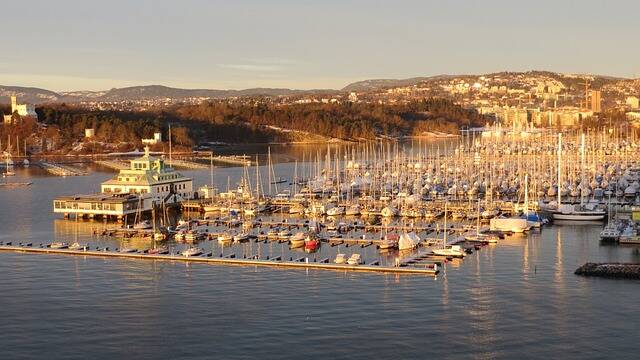A new report shows that large parts of the areas important for the environment and outdoor living in the Indre Oslofjord are now occupied by floating and permanent boat docks.
Also read: Norway – Oslo, fjords, nature and attractions waiting for tourists
“We need to stop consuming the beach area like we do today. Boat harbors are often set up in the most valuable areas where important seagrass meadows exist at the bottom. They are also places where the public should have free access to bathing, says director of the Norwegian Environment Agency, Ellen Hambro.
Over the last 60 years, 7-8 percent of the total shallow water area in the beach area of the inner Oslo Fjord has been lost to floating and fixed boat piers. This is shown in report, which the Norwegian Institute for Water Research (NIVA) has developed on behalf of the Environment Agency, as a follow-up government action plan for a clean and prosperous Oslofjord.
The shadow and propellers of the boat destroy
Marinas are often placed in bays and coves where it is warm with little wind and waves. These are also very favorable areas for seagrass. Seagrass meadows fix carbon dioxide, reduce erosion and are very important habitats for fish and many other species. Seagrass patches are rapidly disappearing from Oslo Fjord. The environmental condition of most of the grass meadows that remain has deteriorated in the last 10 years.
Floating jetties and boats shade the bottom, preventing the seagrass from getting the light it needs to grow. Boat propellers often tear up the seagrass and move the bottom, making the lighting conditions even worse for the seagrass. In addition, entire areas of seagrass can disappear during the construction of piers.
Responsibility of municipalities
– We already know that more than two-thirds of the land in the Indre Oslofjord beach area has been privatized. As such, this raises additional concerns that important underwater plant and animal life is being lost. At the same time, most people's access to the sea is further restricted by the occupation of so much shallow water by boat piers, says environmental director Ellen Hambro.
There were very few such bridges in the 60s. Today, the jetties cover an area of more than two square kilometers along the Indre Oslofjord beach area. In Bærum, more than 10 percent of the beach area has been lost. In the report, NIVA recommends stopping further seabed loss at depths of less than 10 meters in the Indre Oslofjord as soon as possible.
“Batherers and seagrass had to give way to recreational boats and piers. When a quay is built, there are often requests to expand the area and dredge the seabed to make room for larger boats. Municipalities have a major responsibility to tighten permits for the establishment and expansion of piers in the beach area, says Ellen Hambro.
Part of the plan for the Oslofjord
It may be important for the Norwegian Environment Agency to follow up with new research to see if floating piers are weakening the flow of water in the fjord. Poor water flow can reduce both the oxygen content of the water and the circulation of nutrients, which in turn can have a negative impact on plants and animals that live in the water.
The government has its own action plan for a clean and rich Oslofjord. In the plan, the government encourages municipalities to avoid encroachment and development, both to provide public access to outdoor recreation areas and to spare valuable areas of the seabed, such as seagrass meadows.
Like us on Facebook and share our post with others. Thank you.
Source: Norwegian Environment Agency


